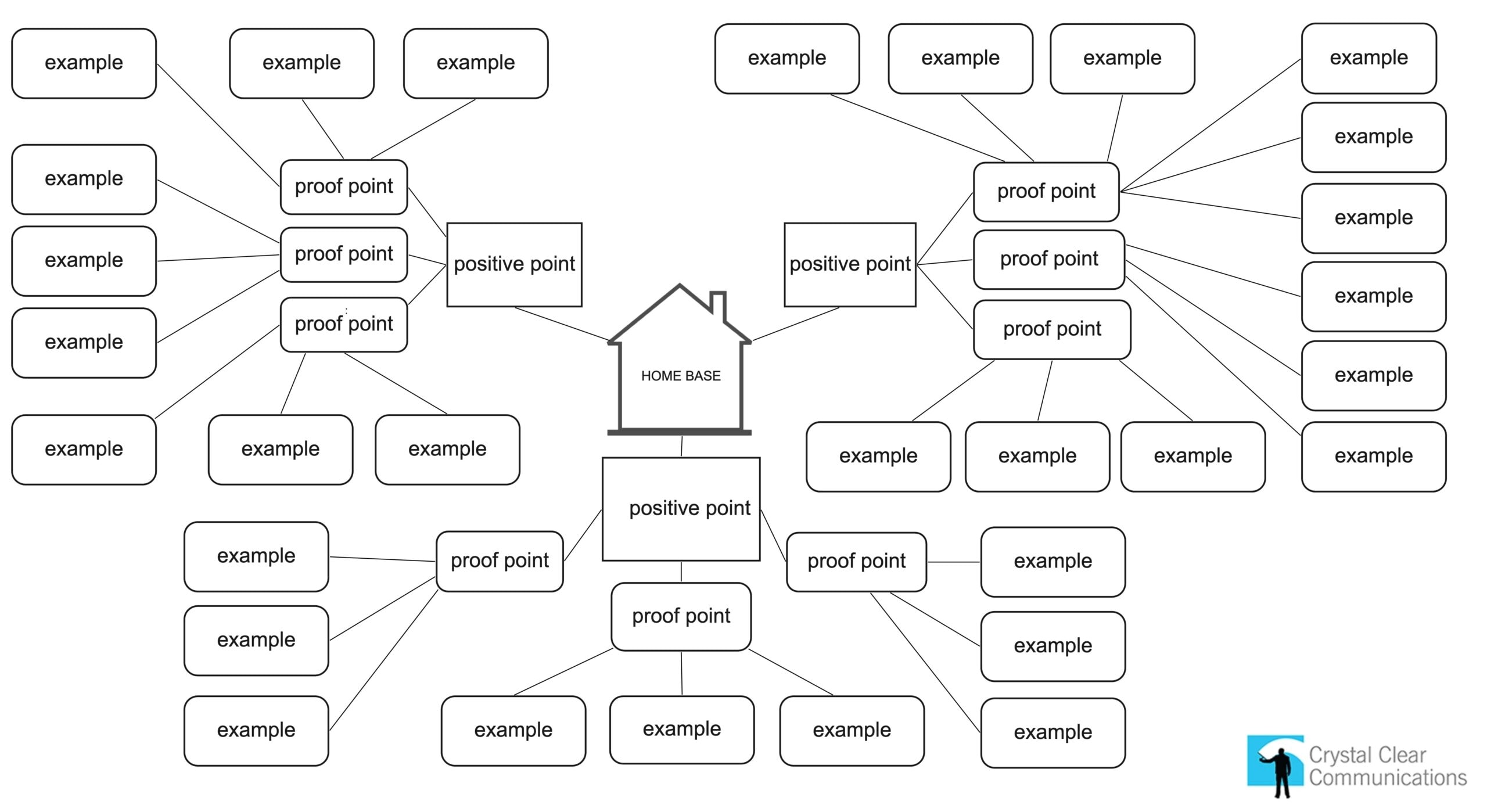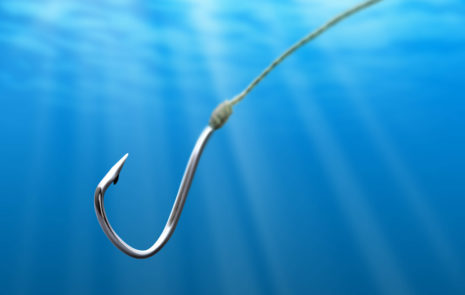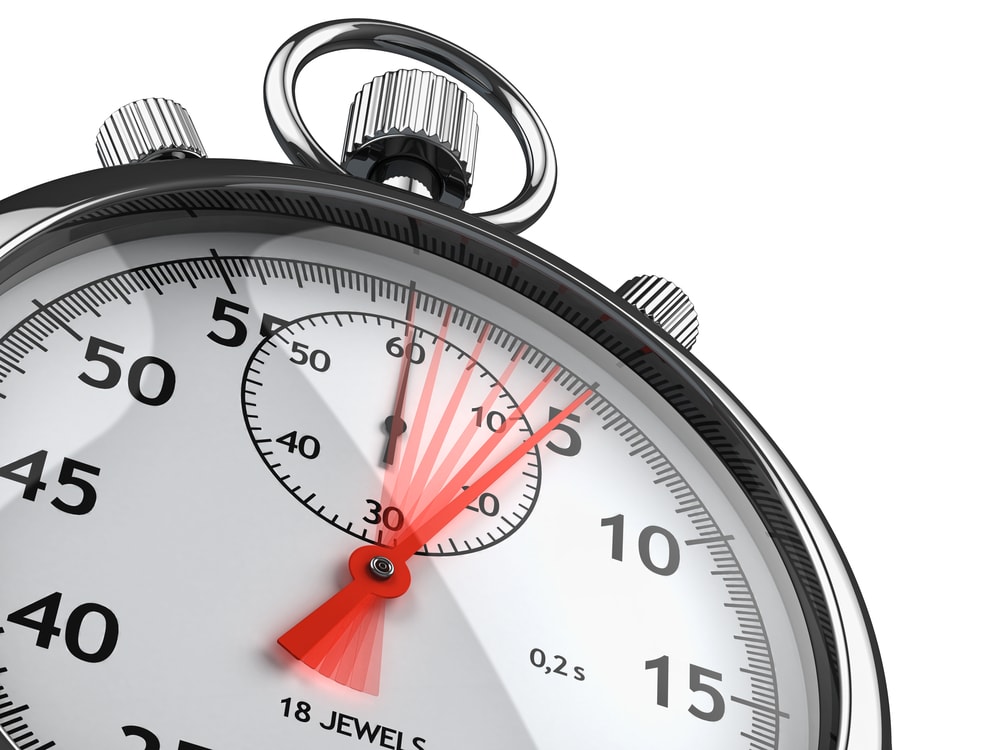
“How to increase your audience’s attention span with a Message Map”
“How can you move consumers along in the attention span journey from 7 seconds to 2 minutes, to 5 minutes?” asked a marketer from CarMax. This question ranks among the Top 100 Questions about Content Marketing.
Brands need one clear, consistent, and compelling message. That’s what a Message Map is all about:
- You see what to say.
- Then you say what you mean.
- You convey a message that’s clear, consistent, and compelling.
Each element of a Message Map has a distinct job to do, so let’s walk through the jobs that a brand’s message needs to get done.
In 7 seconds, you need to hook people’s attention
First impressions matter.
In the first 7 seconds, a message must hook your audience’s attention. Otherwise, they’ll ignore it.
To hook your audience in 7 seconds, lead with an answer to their key question: What’s in it for me? (WIIFM?)
In the Message Map answer WIIFM
In a Message Map, the answer to WIIFM is called “home base.” It’s the center of your message.
Since the home base is about your audience, not about you, it’s the message element that’s likeliest to hook people’s attention in the first 7 seconds. People love to hear a message about themselves.
For a successful home base:
- Use one main message as your home base, not multiple messages. “By focusing on one message, you can reach 100% of your audience,” says a Kantar Millward Brown study.
- Plan to deliver your home base message more than once, since people seldom recall a message they hear only once. “One-time messages are usually not effective,” found a study by Ashwin Aravindakshan and Prasad A. Naik.
- Repeat your home base message consistently over time. “[Several studies] suggest that people have the maximum confidence in an idea after it has been repeated between 3 and 5 times,” says research by Wesley G. Moons, Diane M. Mackie, and Teresa Garcia-Marques, in the Journal of Personality and Social Psychology.
A home base is necessary, but by itself insufficient, to get your audience to believe. That’s why you need to offer 3 reasons to believe, which we call “positive points.”
Why 3 reasons? Because the human brain loves to recognize patterns. Three is a magic number that prompts people to recognize a pattern.
When you put the home base and positive points together, you have the anatomy of a 7-second message map:
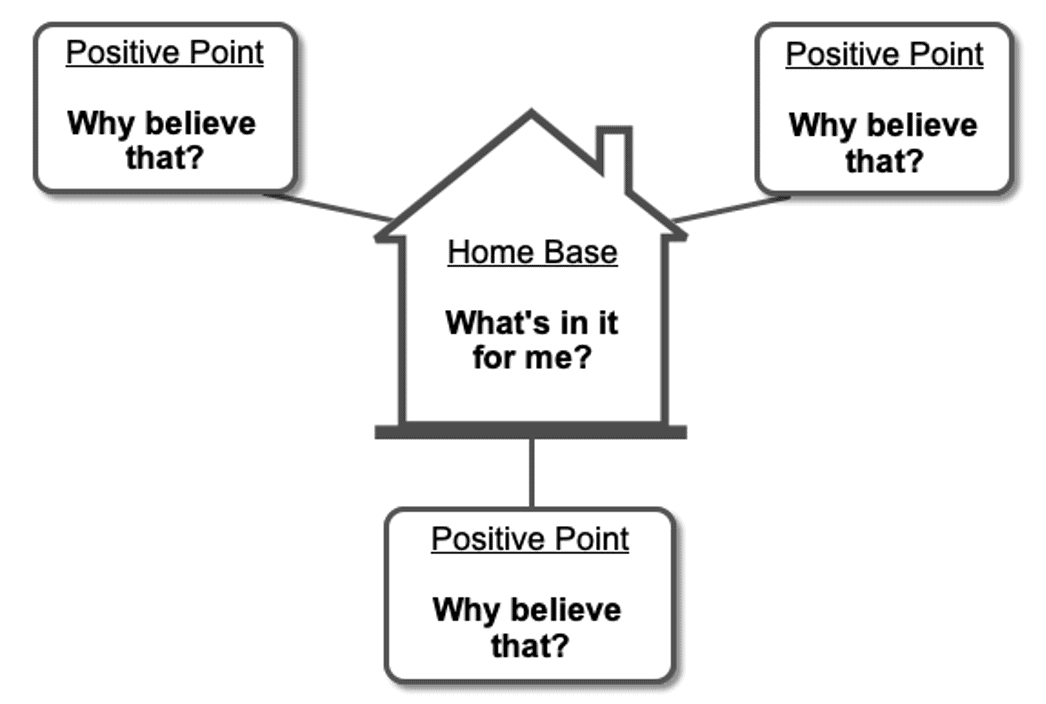
Your 7-second Message Map gives you ideas for headlines, email subject lines, social media posts, and other short forms of content.
Once your audience knows what’s in it for them, and has reasons to believe you, they’re willing to listen to more.
Jobs your message needs to do in 2 minutes
A Message Map helps you gracefully scale up your message to 2 minutes. How? By adding 3 proof points to each positive point.
With proof points, your audience gains a more detailed explanation of the promised benefits and how to realize them. In the first 2 minutes, offer specific points that differentiate your brand from competitors.
Differentiation through proof points
Here’s an example of differentiation through proof points – a 2-minute message from the Virgin Chicago Hotel. On the day of its launch, all the message elements in yellow showed how the first Virgin Hotel was different from other hotels.
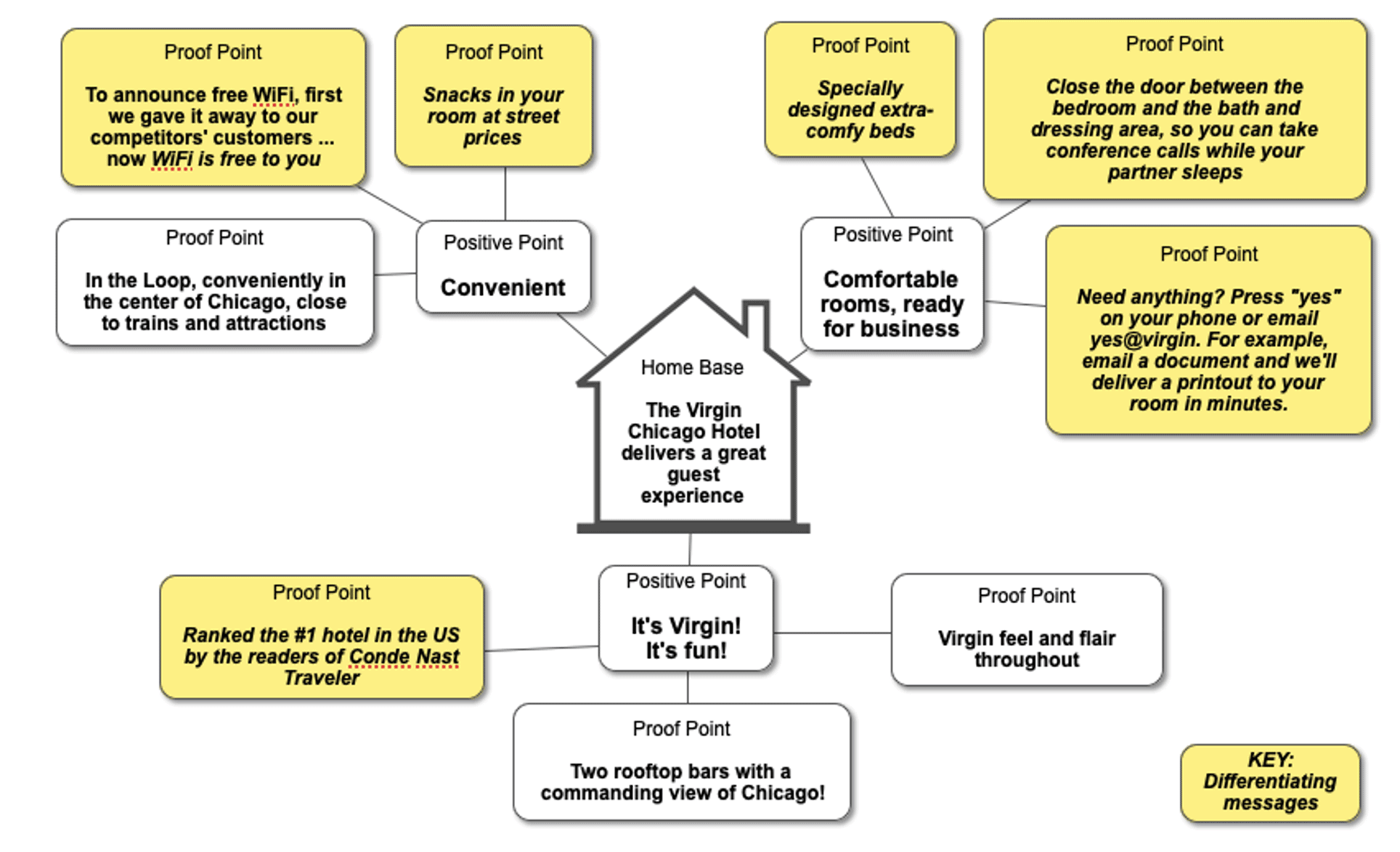
For example:
- Virgin offers snacks in your room at street prices. No one else does.
- Virgin was the first hotel chain to offer free Wi-Fi to guests.
- Virgin has a unique door between the bedroom and dressing area, so your partner can take a conference call in the next room while you snooze.
With a 2-minute Message Map, it’s easier to write a blog, video, webpage, news release or other forms of content. Here’s a template for a 2-minute Message Map:
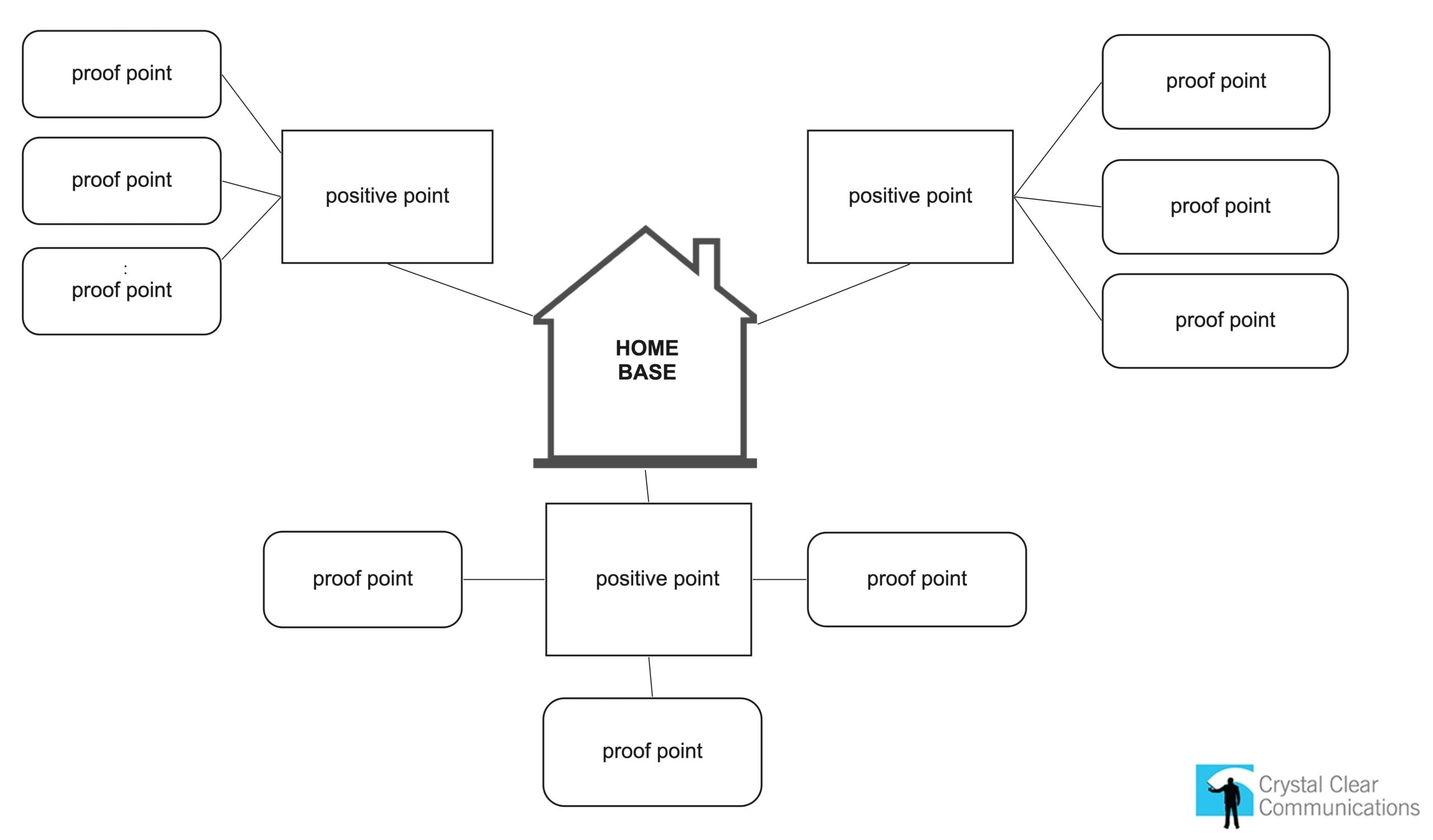
What if you need a longer, more thorough message? Scale your Message Map gracefully up to 5 minutes, 20 minutes, or more.
Jobs your message needs to do in 5 to 20 minutes
As you add 3 examples to each proof point, your Message Map will scale up to 5 minutes, 20 minutes, or more.
Build the Message Map that’s the right size to fit your specific needs. Some brands never need a message longer than 5 minutes. Other brands, especially in science, professional services, healthcare, telecom, and technology, usually need a 20-minute message.
A 20-minute Message Map provides everything you need to write long-form content such as a guidebook, a white paper, a presentation, or an annual report. It includes quotes, facts and figures, comparisons, and detailed information that’s important to your audience.
If there’s information in your Message Map that’s not important to your audience, edit it out.
Here’s a template for a 20-minute Message Map:
With your 20-minute Message Map, you can feed your buyers’ interests, answer specific questions, and focus on the topics your audience cares about most.
In your Message Map, remember to provide social proof by:
- Sharing customer testimonials
- Providing rankings or ratings
- Pointing to analyst recommendations
- Linking to news media coverage.
Social proof is crucial in the late stages of a buyer’s journey, especially on a carefully considered purchase such as a large financial investment or new information technology.
Unless buyers hear from a third party that your brand is a good choice, some buyers will freeze and fail to reach a buying decision. That’s why social proof is a key ingredient to include among the examples in your Message Map.
“How can you move consumers along in the attention span journey from 7 seconds to 2 minutes, to 5 minutes?” is one of marketers’ Top 100 Questions on Content Marketing. Here are the answers.
Related Posts
Top 10 Blogs on Message Maps
“Where can I learn more about Message Maps?” That’s a question I hear from people who learn to use Message Maps in my workshops. Message...
Marketers: Make your salespeople happier
Make your salespeople happier with a concise sales toolkit. Marketers and salespeople have the same goal: increase sales, and therefore revenue, for the organization....
Presenting virtually? 4 tips for using visual aids well
As many Americans continue to work from home, more and more of us are presenting virtually. The good news: People are gaining skills to...
Want to submit even better RFP responses? Involve marketing
Involve marketing for a better RFP response. The RFP (request for proposal) response. The long detailed document, that if done well, gets you a...

